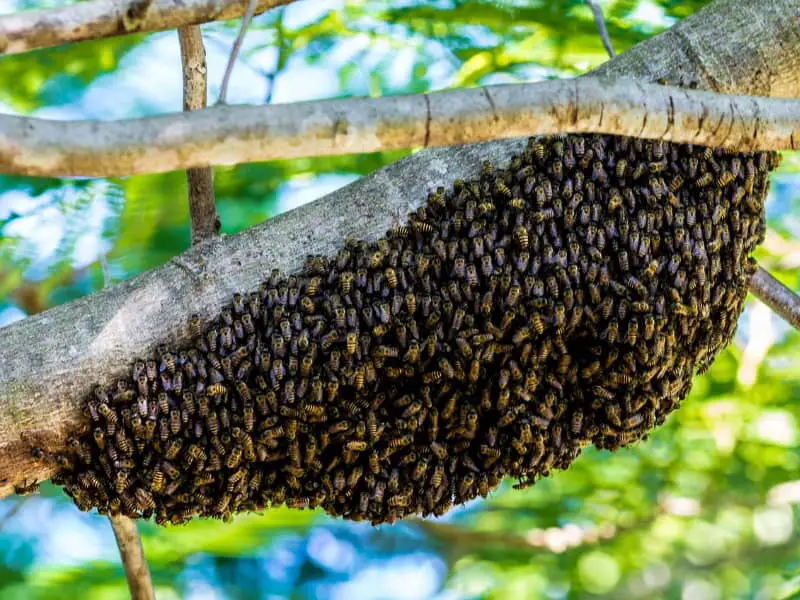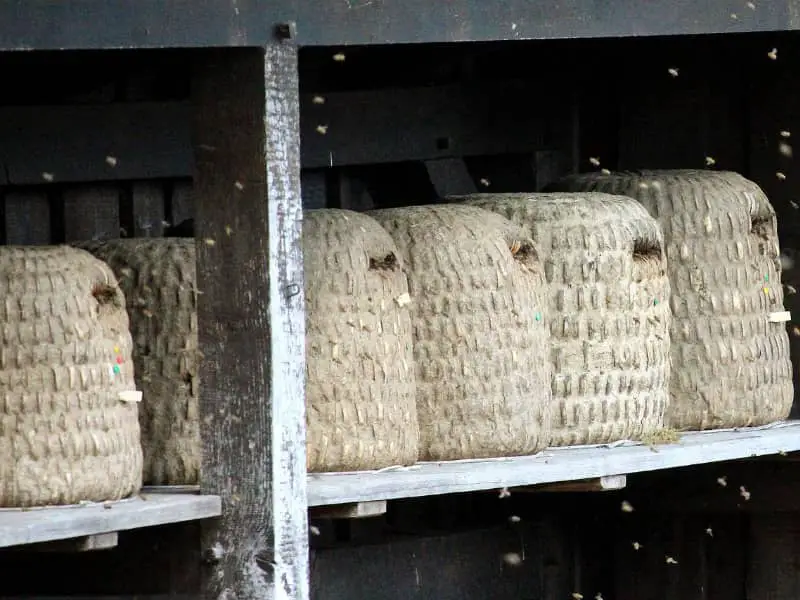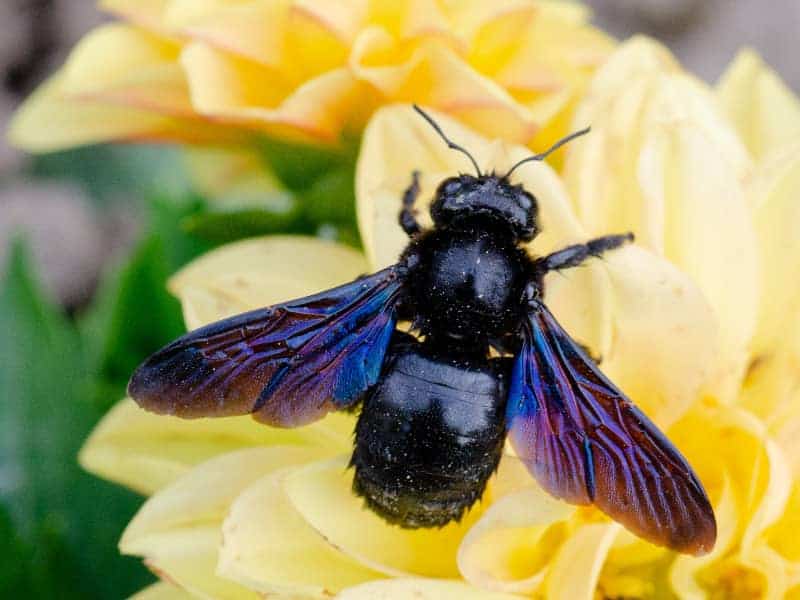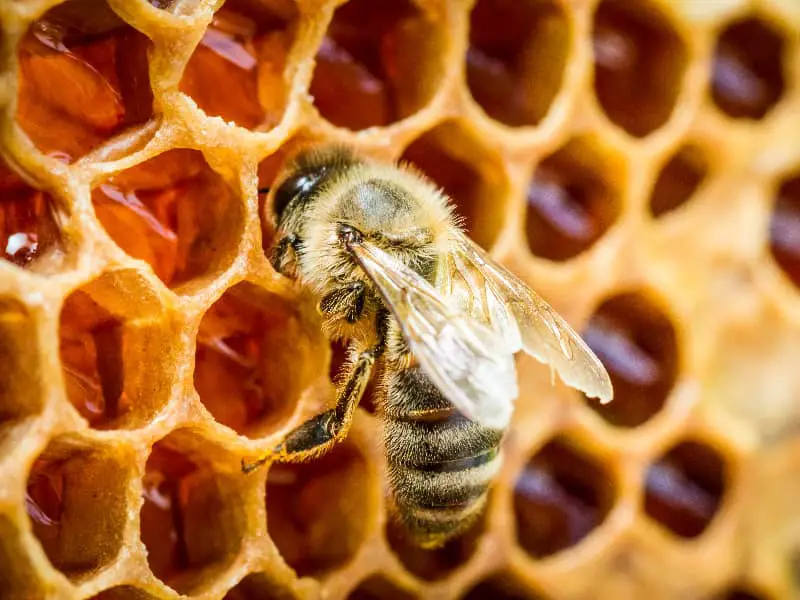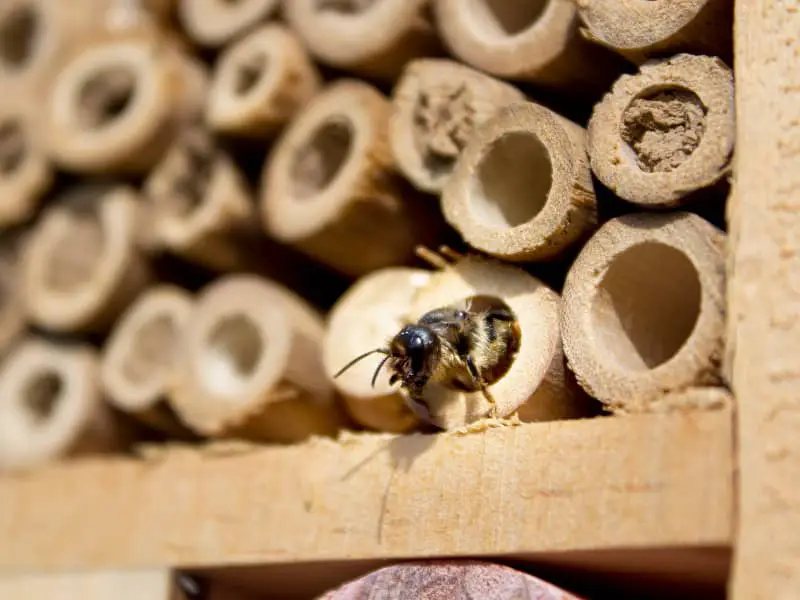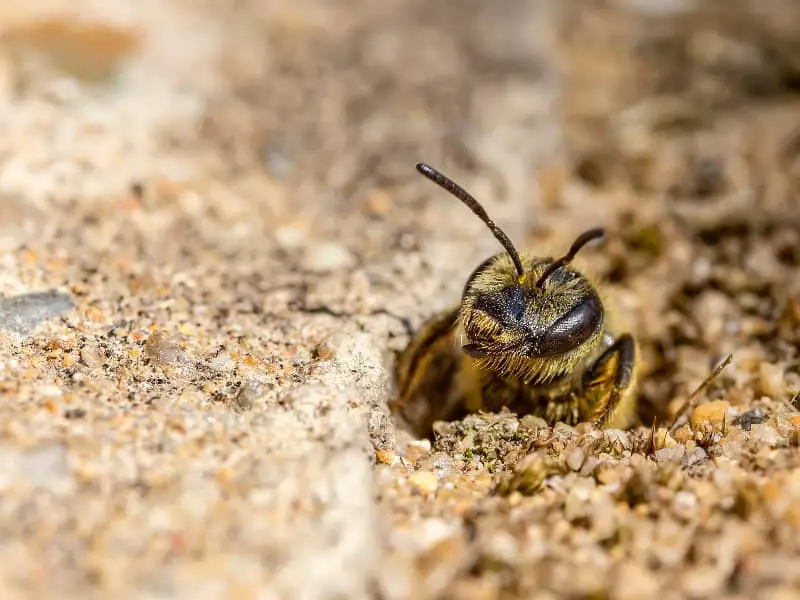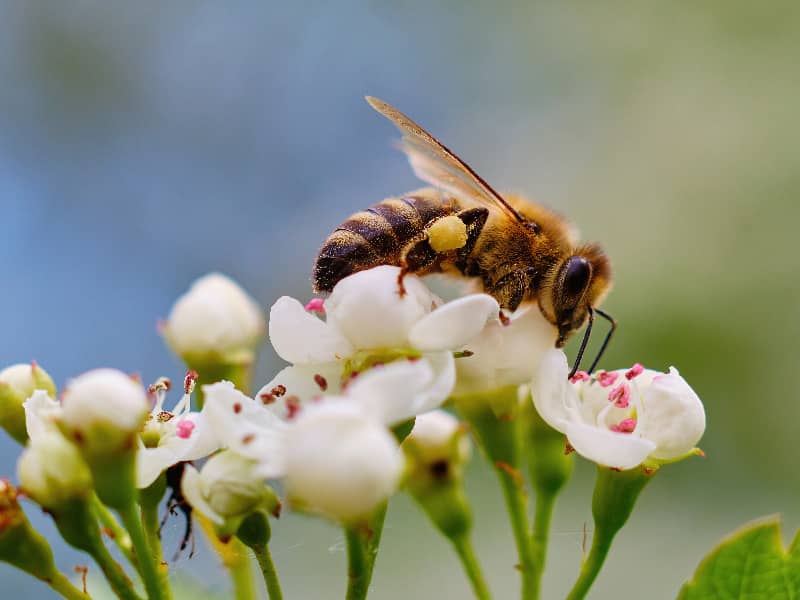
How fast do bees fly?
For many of us, bees are fascinating creatures that produce far more than just honey. Their speed in flight may seem trivial at first glance, but it plays an important role in science and also in practical life. In this article, "How fast do bees fly?" we will dive deep into the topic and explore what influences the speed of bees, why it is so important and what impact it has on different areas of bees' lives.
- How fast do bees fly?
- Importance of flight speed for bees
- How fast do bees fly? - Biomechanics
- How fast do bees fly? - Average flying speed
- How fast do bees fly? - Maximum flying speed
- Airspeed at different stages of life
- How fast do bees fly? - Importance for pollination
- How fast do bees fly? - Speed and navigation
- How fast do bees fly? - Climatic influences
- How fast do bees fly? - Energetic aspects
- Conclusion: How fast do bees fly?
Importance of flight speed for bees
If you've ever wondered how fast a bee can fly, you're not alone. The speed at which bees fly is crucial not only for the insects themselves, but also for the efficiency with which they collect nectar and pollinate plants. Speed affects how quickly they can get from flower to flower and how efficiently they can transport food back to the hive.
Relevance for science
The flight speed of bees is also an interesting field of research. Scientists are studying the biomechanical aspects that take a bee into the air and control its speed. These findings can not only deepen our understanding of bees, but also contribute to technological innovations in areas such as aviation and robotics.
Overview of the topics
In this blog post, we will look at a number of aspects in detail, including biomechanical principles, average and maximum speeds, the influence of climate and disease, and the importance of speed in beekeeping and research.
How fast do bees fly? - Biomechanics
The biomechanics of bee flight is an incredibly complex and fascinating field that sheds light on the extraordinary abilities of these tiny insects. From wing design to muscle structure, there are many factors that influence the speed at which bees fly.
Wing design
The design of a bee's wings is a masterpiece of nature and plays a crucial role in its flight speed. Unlike birds, bees have two pairs of wings that are connected in a complex way. This allows them to maneuver in different directions and move at different speeds.
The wings are designed to maximize lift and minimize drag, which contributes to efficient flight.
Muscle structure
The muscular structure of bees is another important factor influencing their flight speed. The special arrangement of the muscles enables the bees to beat their wings at a high frequency, which in turn increases their speed. Interestingly, these muscles are not directly attached to the wings, but to the breastplate of the bee.
By contracting and expanding these muscles, bees can change the shape and orientation of their wings, allowing them to fly at different speeds and heights.
Energy consumption
One of the most remarkable aspects of bee flight is energy consumption. Although rapid wing beating requires a high expenditure of energy, bees are amazingly efficient at converting food into flight energy. This is crucial to their ability to travel long distances and get from one flower to the next quickly without exhaustion.
How fast do bees fly? - Average flying speed
The question of the average flight speed of a bee is not only interesting for hobby beekeepers and nature lovers, but also for scientists in various fields of research. A better understanding of the speed ranges can give us insights into the bees' way of life and how they move and interact in their respective ecosystems.
Factors influencing the speed
The speed of a bee is influenced by a number of factors, including the type of bee, its size and age, but also external conditions such as wind speed and temperature. Some studies have shown that the average speed of a worker bee is between 15 and 20 km/h.
It should be noted that the speed may also depend on the task at hand, be it foraging, defending the hive, or communicating with other bees.
Measurement methods
Measuring the flight speed of bees is a challenge. Scientists use various methods, including high-speed cameras and special sensors, to accurately record speed. By analyzing this data, a clearer picture of bees' flight characteristics and capabilities can be obtained.
Comparison with other insects
If you compare the flying speed of bees with that of other insects, you will notice that it is quite impressive. For example, butterflies usually fly much slower, while certain types of flies can reach similar speeds. This shows how evolution and the ecological niche in which the bee lives have influenced its flight speed.
How fast do bees fly? - Maximum flying speed
The maximum flying speed of a bee is a topic that fascinates both science and the general public. Who are the record holders? Under what conditions can bees reach their maximum speed? And what are the theoretical limits? In this section, we address these exciting questions.
Record holder
Among the various bee species, there are true speed wonders. While the average honey bee can reach speeds of up to 20 km/h, there are species such as the Africanized honey bee that have even higher speeds. These bees are not only faster, but also more agile, which gives them a survival advantage in certain habitats.
Conditions for maximum speed
A bee's maximum flight speed is influenced by several factors, including temperature, wind speed, and altitude above sea level. In optimal conditions - that is, when the weather is warm but not too hot and wind conditions are minimal - bees can reach their maximum speed.
Moreover, the physical condition of the bee plays a role. Bees that are well fed and healthy are usually faster than those that are malnourished or sick.
Theoretical limits
Every living thing has its physiological and mechanical limits, and bees are no exception. The structure of their wings, the strength of their muscles and the amount of energy required for flight set natural limits for bees.
Scientists are conducting intensive research to understand these limits, as they are important not only for understanding bees themselves, but also for developing new technologies in areas such as aeronautics and robotics.
Airspeed at different stages of life
The flight speed of a bee is not constant and varies in the different life stages. Although larvae and pupae cannot fly, they lay the foundation for the later flying abilities of adult bees. Let's look at these different phases in detail.
Larval stage
In the larval stage, there is no talk of flying yet, since the bees have not yet developed wings at this stage. Nevertheless, this stage is important for the future flight speed of the bee. The nutrients and care that the larva receives during this time can have a significant impact on the development of the musculature and wings later in life.
Pupa stage
In the pupal stage, the bee's wings and musculature begin to develop, although it is still unable to fly. At this stage, the conditions in which the pupa grows up are crucial for the quality of the muscles and wings that are formed. Good nutrition and optimal temperature conditions are crucial for the development of a bee that can reach high flight speeds.
Adult bees
Once fully grown, a bee's flight speed varies depending on several factors, including species, age, and health. Younger bees tend to be faster because their muscles and wings are in prime condition. However, as they age, their speed can decrease, partly due to wear and tear and muscle fatigue.
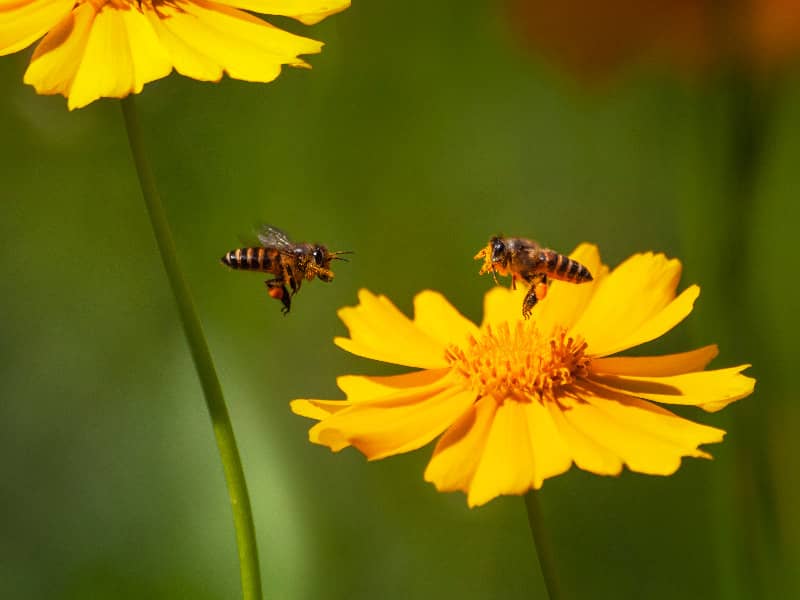
How fast do bees fly? - Importance for pollination
The flight speed of bees is a crucial factor for their efficiency in pollination. It affects not only how fast a bee can fly from flower to flower, but also its role in different ecosystems and the seasonal differences in pollination activity. Let's look at these points in detail.
Foraging efficiency
The speed at which a bee flies directly affects its ability to efficiently collect food in the form of nectar and pollen. Faster bees can visit more flowers in less time, which increases their productivity and thus provides more food for the hive. This increased efficiency is particularly important for honey production.
Role in ecosystems
The flight speed of bees also influences their role in ecosystems. Faster bees can cover a larger area, which in turn increases their ability to pollinate different plant species. This has an impact not only on the plants themselves, but also on the animal species that depend on these plants. In this way, bees contribute to biodiversity and ecosystem health.
Seasonal differences
The flight speed of bees can vary throughout the year. Bees tend to be more active and faster in spring and summer, for example, because conditions are more favorable for flight. In autumn and winter, on the other hand, they are less active and fly more slowly. This affects pollination efficiency and is an important factor in the fertility of agricultural crops and wild plants.
How fast do bees fly? - Speed and navigation
A bee's flight speed is closely related to its ability to orient and navigate during flight. But how exactly does speed affect navigation, and what role do the antennae and collective "GPS" of a bee swarm play in this? Let's dive into these exciting questions.
Orientation during the Flight
Bees are amazingly good navigators. However, their ability to orient themselves depends in part on their flight speed. Faster bees have less time to pick up visual cues from their surroundings, which can affect their navigation.
Nevertheless, bees have evolved mechanisms to navigate efficiently at higher speeds, such as using polarization schemes in the sky or observing landmarks.
Role of the antennas
The bees' antennae play a crucial role in navigation, especially in terms of speed. They serve as sensors for wind speed and direction and allow the bee to adjust its speed accordingly. This is especially important when bees need to fly against the wind or when they want to increase their speed to get to a specific destination.
GPS of the bee swarm
In the context of a swarm of bees, the collective intelligence of the group acts as a kind of "GPS". Each bee contributes information that helps the entire group to orient and navigate. The speed of the individual member influences how quickly this information can be passed within the swarm. This is particularly important when searching for a new nesting site or for food.
How fast do bees fly? - Climatic influences
A bee's flight speed is not only a question of genetic makeup and training, but is also significantly influenced by climatic factors. How do bees react to temperature, wind speed and humidity, and how do these factors influence their flight performance? Let's take a look at this in detail.
Temperature
Temperature has a direct influence on the muscle performance of bees. At cooler temperatures, bees are usually less active and fly more slowly. In contrast, higher temperatures can increase flight speed and overall activity, but only up to a point. Too high temperatures can be stressful for bees and affect their flight performance.
Wind speed
Wind speed is another important climatic factor. Strong winds can force bees to fly more slowly or even avoid flight completely. However, some bee species have developed strategies to fly efficiently even in windy conditions, such as staying closer to the ground where the wind is weaker.
Humidity
Humidity can also affect the flight speed of bees, but to a lesser extent than temperature and wind. High humidity can make flying more difficult because the wings receive less lift. In dry conditions, low humidity could affect respiration and thus the energy supply of flying bees.
How fast do bees fly? - Energetic aspects
The speed at which a bee flies has profound effects on the energetic expenditure it has to invest. But what does this mean for a bee's lifespan and what energy sources does it use for flight? Let's examine these important issues in more detail.
Energy expenditure when flying
Flying is an extremely energy-intensive activity for bees. The faster they fly, the more energy they have to expend. This increased energy expenditure can be covered by special energy reserves in the bee's body, for example in the form of stored nectar. However, it is a complex balance: while a fast flight allows the bee to collect more food in a shorter time, it also increases the consumption of energy reserves.
Effect on service life
The energetic expenditure of flying also has implications for the lifespan of the bee. High energy expenditure can lead to faster wear and tear of muscles and other organs, potentially shortening lifespan. This shows how important it is for bees to carefully manage their flight speed and duration.
Energy sources
Bees get their energy mainly from the nectar of flowers, which is converted into sugar and serves as a quick source of energy. Some bee species also use other sources such as honeydew. It is fascinating that the energy efficiency of flight can vary in different bee species, depending on their diet and the specific energetic requirements of flight.
Conclusion: How fast do bees fly?
Having looked in depth at the flight speed of bees and the many factors that influence it, it is time to summarize our findings and consider unanswered questions.
Summary of the findings
The flight speed of bees is an extremely complex phenomenon that is influenced by a number of different variables. These include genetic factors, the age and developmental stage of the bee, climatic conditions and energetic aspects. All these factors interact in a complicated way to determine the speed and efficiency of bee flight.
It is clear that the speed at which a bee flies affects not only its foraging, but also its role in the ecosystem and even its lifespan.
Open questions
Despite our extensive review, many questions remain. How exactly do climate changes affect the flight speed of bees? To what extent does flight speed influence communication within a bee swarm? And how might humans benefit from these findings in agriculture or conservation? These and other questions require additional research and offer exciting starting points for future investigations.
Author

-
Garden animal - A life with nature
Welcome to my animal blog! My name is Dirk and I am happy to take you on my journey through the fascinating world of animals and gardening.
Born 54 years ago, I have had an insatiable curiosity for the animal world around me since childhood. Although I have moved professionally in other industries, my true passion has always been animals and nature. It is remarkable how a small garden has become such an important part of my life.
Many of my fondest memories are associated with the animals that share our home. Whether it's the curious squirrels that scurry across the trees in the morning, the colorful variety of birds that visit our feeders, or the busy bees and butterflies that pollinate our flowers, every moment with them is invaluable to me.
This blog is my contribution to share my experiences, discoveries and insights with like-minded people. Here I will share stories of unforgettable encounters with animals, give tips on gardening and creating wildlife-friendly habitats, and take you on my journeys through nature.
Thank you so much for being here!
Cordial,
Dirk aka garden animal
Last posts
- 27. February 2024PetsVeganes Hundefutter – Grün und Gesund?
- 18. January 2024ChickensOregano für Hühner
- November 27, 2023HamsterDiurnal hamsters
- November 24, 2023HamsterHamster hammock

